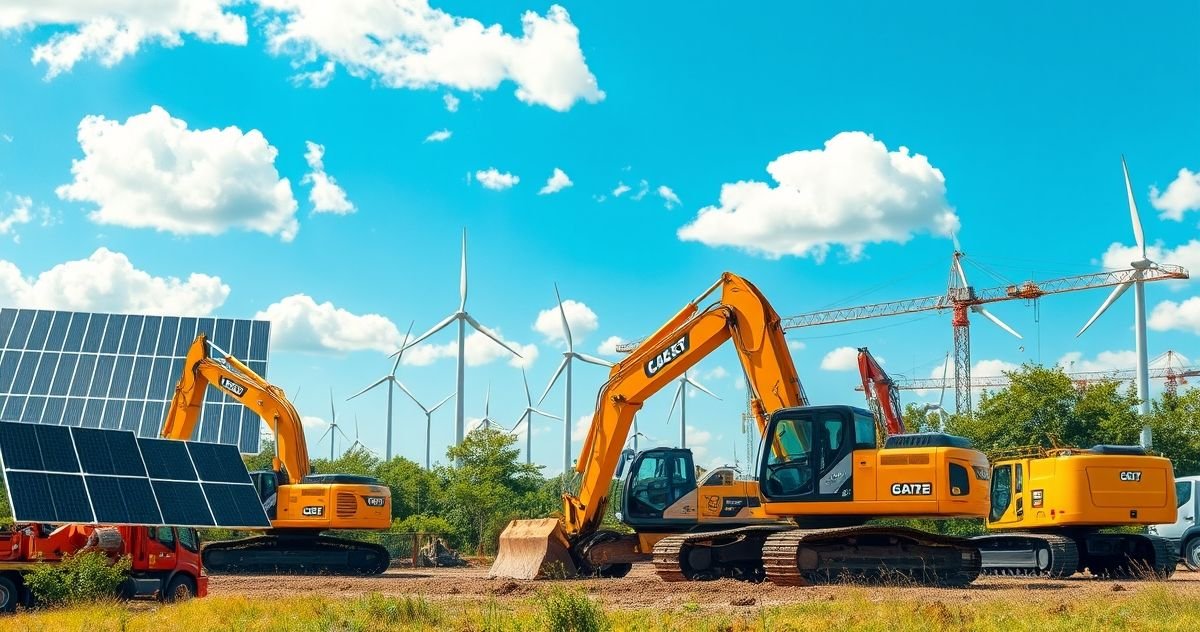Understanding the Electric Construction Equipment Credit
The Electric Construction Equipment Credit is an emerging provision aimed at encouraging the adoption of environmentally friendly practices in the construction industry. This credit offers financial incentives for businesses and contractors who utilize electric-powered equipment instead of traditional fossil fuel-driven machinery. By incentivizing the transition to cleaner technologies, the credit not only supports sustainability goals but also aligns with broader environmental policies to combat climate change.
The Purpose of the Electric Construction Equipment Credit
The primary purpose of the Electric Construction Equipment Credit is to reduce the carbon footprint of the construction sector, which traditionally relies on heavy fuel-consuming machines that contribute significantly to greenhouse gas emissions. By offering tax credits, the government intends to make the initial costs of acquiring electric equipment more palatable, thereby accelerating adoption rates. This credit aligns with the ongoing global transition toward green technology solutions across various industries.
Key Features and Components
This credit is typically structured to offset a percentage of the cost incurred in purchasing or leasing qualifying electric construction equipment. Eligible equipment may include electric excavators, loaders, cranes, and other machinery commonly used in construction projects. To qualify, the equipment must meet specific criteria for energy efficiency and operational capability, which are outlined by regulatory agencies or standards organizations. Additionally, the credit may be tiered, providing larger benefits for more efficient or innovative technologies.
Filing and Compliance Requirements
Businesses looking to claim the Electric Construction Equipment Credit must adhere to detailed filing procedures. This generally involves documenting the purchase or lease agreements, maintaining records of the equipment’s operational efficiency, and providing proof that the machinery is being used as intended. Compliance with state and federal guidelines for energy usage and emissions is also critical. Tax accountants or advisors can play a key role in ensuring that claims are filed accurately and in compliance with all applicable rules.
The process usually requires the submission of specific forms alongside the standard business tax returns. This ensures that the Internal Revenue Service (IRS) or relevant local tax authority has all necessary information to verify and approve the credit. Late or incomplete filings may result in delays or denials of the credit.
Penalties for Non-Compliance
While the Electric Construction Equipment Credit offers valuable financial benefits, failure to comply with the associated requirements can result in penalties. Common issues include inadequate documentation, failure to meet technical specifications for eligible equipment, or incorrect filing. These infractions may lead to fines, reduced credit amounts, or the complete forfeiture of credits previously claimed. In severe cases of non-compliance, the IRS may conduct audits or investigations, leading to further legal and financial repercussions.
Importance in Tax Resolution and Financial Compliance
The Electric Construction Equipment Credit is significant not only for its environmental benefits but also as a strategic financial management tool for businesses in the construction industry. By leveraging this credit, companies can effectively lower their tax liabilities, freeing up capital for reinvestment in sustainable technologies or other business operations. Moreover, as governments continue to tighten regulations on emissions and environmental impact, being proactive in adopting electric equipment can also offer competitive advantages in bidding for projects that prioritize sustainability.
From a tax resolution perspective, this credit can play a crucial role in addressing overall fiscal exposure by reducing tax burdens and fostering long-term operational efficiencies. Companies that take advantage of such credits are likely to be better positioned to manage compliance risks and align with future regulatory developments.
In conclusion, the Electric Construction Equipment Credit represents a vital intersection of economic incentives and environmental policies. By promoting the switch to cleaner, electric-based construction machinery, the credit fosters both ecological benefits and financial performance improvement for industry players. Stakeholders ranging from construction firms to policy-makers anticipate that such credits will continue to play an essential role in supporting the ongoing transformation toward a more sustainable construction sector.

